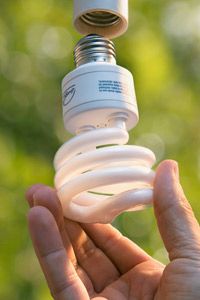With all the recent warnings about mercury levels in fish, you'd think fish were the only source of the poison we encounter in daily life. Mercury in fish (which is actually methylmercury, to be specific) is a legitimate problem. The fact is, though, there are plenty of other potential sources of mercury exposure, including home thermostats, thermometers (it's that silver substance), the air in certain areas, and surprisingly, the energy-saver that's going to change the world: the compact fluorescent lightbulb, or CFL.
Yes, there's mercury in CFLs, those lightbulbs that might soon be mandated as permanent replacements for the incandescent bulbs that have been the standard since Edison.
Advertisement
So what's the big deal with mercury? It's just an element (Hg) on the periodic table, and it occurs naturally in the environment. The problem is that it's a neurotoxin -- a substance that damages nerve cells. In certain doses, even small doses, it's poisonous. Mercury poisoning can cause permanent brain damage, seizures and, in great enough exposures, death.
The question is, then, what's the primary risk? We've been warned plenty about fish. But should we stop replacing our incandescent bulbs with high-efficiency CFLs? Which source has the greater mercury supply? In this article, we'll look at the amounts of mercury in fish and fluorescent bulbs and see which one should cause us the most concern. We'll also find out what everyday process is the greatest source of mercury in the world.
Before we get into specific sources of the neurotoxin, let's find out how much mercury it actually takes to make you sick.
Advertisement




